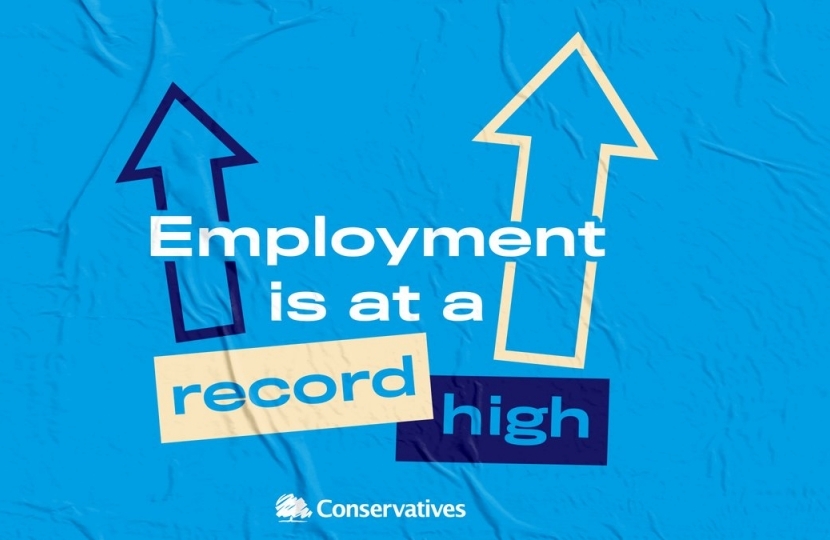
It's been revealed that there are now more women in work than ever before – and Britain's unemployment rate is at its lowest since 1974.
The number of women in work is at a record high of 15.42 million – over 1.79 million more women in work than in 2010.
The new independent figures show the fundamentals of the British economy remain robust with Conservatives.
We're helping people into work by reforming welfare so work always pays, while backing businesses to create more, better paying jobs across the whole country through our careful economic management and modern Industrial Strategy.
The Conservatives are helping people into work by reforming welfare so work always pays, while backing businesses to create more, better paying jobs across the whole country through our careful economic management and modern Industrial Strategy.
Since 2010, we have helped over 3.6 million more people into employment. The number of people out of work is at its lowest since 1975, at 3.9 per cent – as we are helping people into work so that they have the economic independence that a job brings and can reach their full potential.
Behind every employment number is a person and a family whose self-esteem, mental wellbeing, economic circumstances and life chances are all vastly improved by being in the workplace.
Key statistics:
- Wages: Average weekly earnings for employees increased by 3.4 per cent compared with a year earlier.
- Employment: A record high of 32.71 million (up 473,000 over the last year and up by 3.67 million since 2010).
- Employment rate: 76.1 per cent (up 0.8 points over the past year and up 5.9 points since 2010).
- Unemployment: 1.34 million (down 112,000 over the past year and down by 1.17 million since 2010) and the lowest level since 1975.
- Unemployment rate: 3.9 per cent (down 0.4 points over the past year and down 4.0 points since 2010) – the lowest rate since 1975 and halving since 2010 (8.0 per cent).
- Youth unemployment: There are over 439,000 fewer young people out of work since 2010 – almost halving since 2010.
- Disabled people: There are almost 1 million more disabled people (930,000) in work since 2013, as we are breaking down the barriers to employment facing disabled people.
- The latest data shows that wages increased by 3.4 per cent – while prices rose by 1.8 per cent in January – meaning wages have risen faster than prices for a year and hard-working families are keeping more of what they earn. This is good news, but there is more to do.
- The employment rate among ethnic minority groups is now 66.5 per cent.
- Nearly four-fifths of jobs created since 2010 are full-time jobs, with 2.6 per cent of our workforce on zero-hour contracts – a reduction over the last year.
- There are over 1.77 million more women in work since 2010.
At the Spring Statement, the OBR confirmed Britain’s employment success is set to continue:
- Employment is expected to be higher over the next five years, with the number of people in work expected to be 33.2 million by 2023.
- This means that since 2010, there will be 4.2 million new jobs created, making John McDonnell’s prediction of 1.2 million jobs lost out by 5.4 million.
Labour don’t know how to handle the economy and would hurt the people they claim to want to help, just like last time:
- The CBI has warned Labour’s plans would ‘reduce pay in people’s pockets’. The Director-General of the CBI, Carolyn Fairbairn, said ‘whatever Labour say about this the outcome will be one that reduces pay in people’s pockets’ (BBC Radio 4, The Today Programme, 24 September 2018, archived).
- No Labour government has ever left office with unemployment lower than when it started, and the number of unemployed people increased by one million in Labour’s last term in office. At the start of Labour’s third ministry in March to May 2005 the unemployment level was 1.4 million but by March to May it had risen to 2.5 million (ONS, Labour Market Statistics, 19 February 2019, link).
- The number of households where no member had ever worked nearly doubled under Labour. This rose from 184,000 in April – June 1997 to 354.000 in April – June 2010 (ONS, Working and workless households, 28 November 2018, link).
